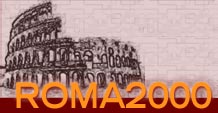
From the Spanish Steps to the Trevi Fountain, the route passes
through the social and commercial heart of the city, with a stop
at the Trevi Fountain, the Palazzo del Quirinale and ending at the
Baths of Diocietian, the largest monument of ancient Rome.
Piazza di Spagna can easily be reached by underground Line A. This area has long been known to tourists, also because of the foreign institutes located here. The most splendid period was in the 1 8th and 1 9th centuries when travellers and artists from Northern Europe stayed in the inns and hotels in the area.
The square took on its present name when the Spanish embassy was opened here in the 17th centh.; it is divided into two parts by the Fontana della Barcaccia shaped like a sinking boat with water pouring out of the bow and stern.
The Spanish Steps, built by F. De Sanctis in 1726, are very striking, especially in spring when they are decorated with azaleas.
Piazza Trinità dei Monti, with its obelisk and the church of the
same name with its twin bell-towers, provides a view over the city centre. The church, founder by the French, houses works by D. di Volterra, famous for having covered the naked figures of the Last Judgement painted by his master Michelangelo.
Villa Medici is located on the right, and since 1804 has housed the French academy, founded by Louis XIV to provide support to French painters in Rome. Continuing down the street we reach the Pincio belvedere, with its stupendous view, and Villa Borghese.
Via dei Condotti
This street is the centre of a quality shopping area. Some of its famous names include the Caffé Greco, opened by a Greek in 1760 and famous for the many artists who went there over the years. Turning left down Via del Gambero we reach Piazza San Silvestro and Via del Corso.
From Via delle Muratte we reach Piazza di Trevi, site of the famous fountain featuring in Fellini's film La dolce vita.
Built next to Palazzo Poli, the fountain is the work of Nicola Salvi, employed by Clement XII and started in 1732. It is the custom to throw a coin into the fountain facing away from
it in order to ensure your return to Rome.
Quirinale
This hill was a residential area in Imperial times, the site of the famous gardens of Sallustius. After being abandoned in the Middle Ages, it regained its splendour at the end of the 16th centh.
when the opening up of new streets led to the construction of numerous buildings around the Palazzo del Quirinale, the papal summer residence.
The Fontana dei Dioscuri is located in the middle of the square and consists of elements from various epochs. In 1588, Sixtus V had the statues of the Dioscuri moved here from the Baths of Constantine. In 1786, the obelisk from the Mausoleum of Augustus was added, and the basin from the Roman Forum was placed here in 1881.
The square is dominated by the Palazzo del Quirinale, started in
1574 and taking on its present appearance in 1730 with the contributions of various architects.
The palace, once the royal palace, is now the presidential residence and is guarded by the Corazzieri, a military corps with the purpose of ensuring the President's security.
Along the Via del Quirinale we see the fine Baroque church of Sant'Andrea, by Bernini. A visit to the rooms of St. Stanislaus Kostka enables us to appreciate the lifestyle of the Jesuits in the 17th century. The small church of San Carlo alle Quattro Fontane by Borromini is also interesting, and the cloister and refectory of the convent are worth visiting.
At the crossroads of these 16th century streets there are four small fountains representing reclining divinities: the Tiber with the she-wolf, the Nile, Juno and Diana.
Piazza Barberini
Turning left down Via delle Quattro Fontane we come to Piazza Barberini. The Barberini, the family whose coat of arms has three bees, owned an immense villa of which the palace in this
street was only a part.
The palace was commissioned by Pope Urban VIII Barberini to Maderno
in 1623 and completed by Bernini and Borromini. It houses the
Galleria Nazionale di Arte Antica with paintings from the 13th to the 18th centuries. The square is adorned with the Fontana del Tritone designed by Bernini. It is the start Via Veneto, famous in the 1960s for its luxurious hotels and cafes and people who enjoyed the dolce vita
Going up Via Barberini we come to Largo S. Susanna with its Baroque church of the same
name, now the American church. The nearby Piazza San Bernardo has the church of S. Maria della Vittoria containing the Cornaro chapel, entirely designed by Bernini, and the Fontana del Mosé.
Piazza della Repubblica
The Baths of Diocletian were built between 296 and 206 A.D. and cover an area of one hectare, now occupied by Piazza della Repubblica, Piazza dei Cinquecento and nearby streets. They were larger than the Baths of Caracalla and could hold up to 3,000 bathers.
The best preserved part houses part of the National Roman Museum and the church of S. Maria degli Angeli (Via Cernaia 9) designed by Michelangelo and transformed by Vanvitelli in the 18th century.
Piazza della Repubblica, redesigned at the end of the 19th century, is better known as Piazza dell'Esedra from the ruins of the Baths of Diocletian. The Fontana delle Naiadi lies on the road facing Termini Station. |

